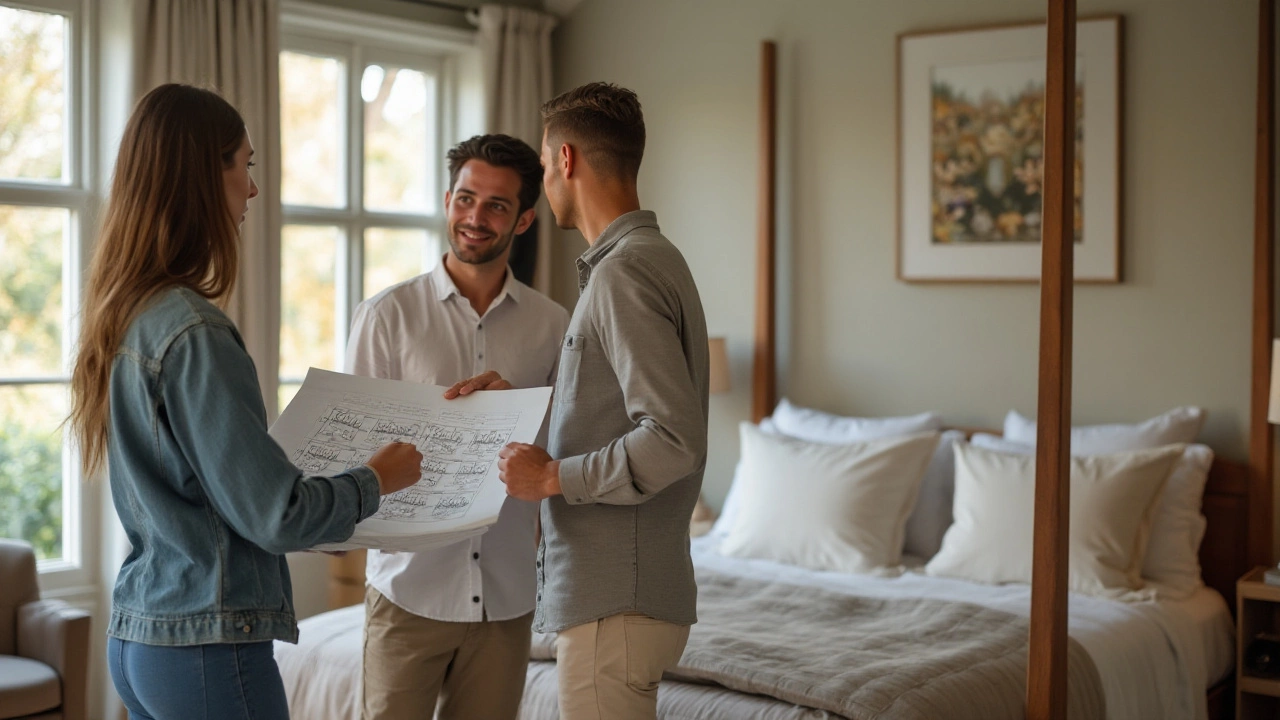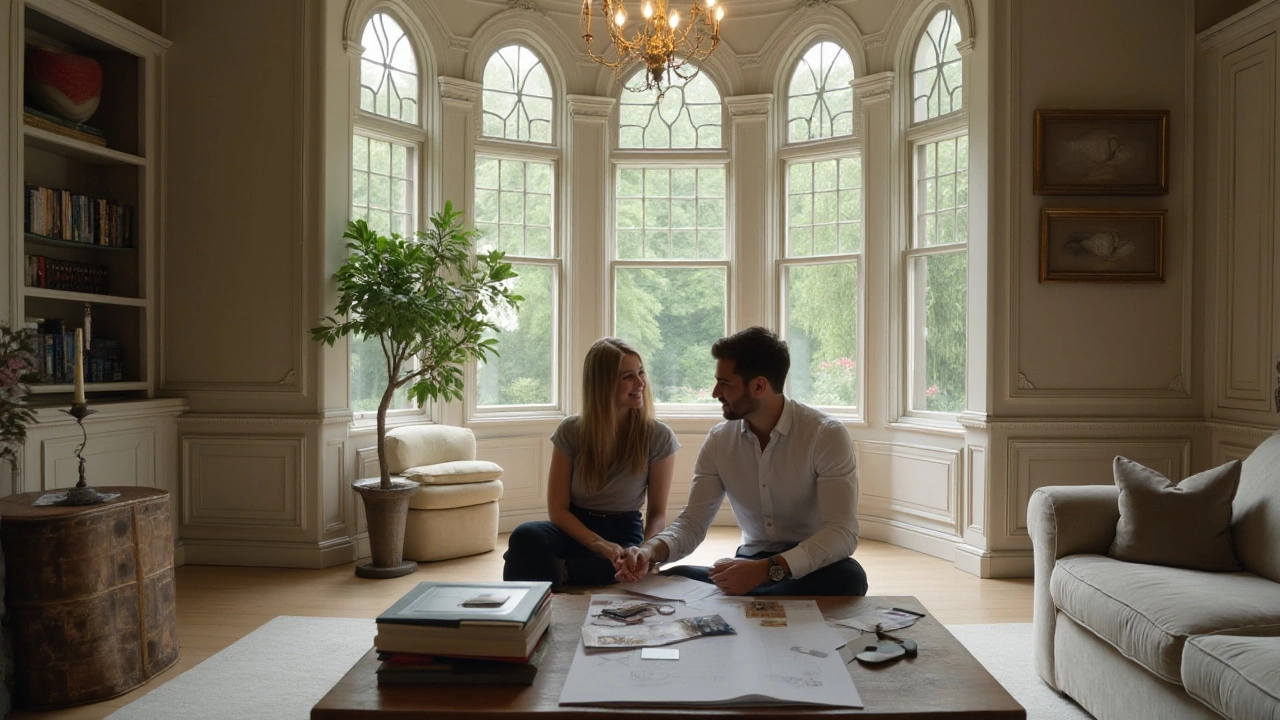As we step into 2025, hiring an interior designer is becoming a popular choice for those looking to personalize and beautify their spaces. However, the question on many minds is, "What do designers charge per hour?" Understanding these rates is essential for anyone planning a renovation or redecorating project.
The cost can vary widely, impacted by several factors such as the designer's experience, the complexity of the project, and geographic location. But fear not, as this article aims to demystify the pricing strategies, offering insights and practical advice to help you plan your dream space without financial stress. Whether you are aiming for a minimalist aesthetic or a grand, luxurious feel, knowing what to expect in terms of costs can make the journey smooth and enjoyable.
- Understanding Interior Designer Fees
- Factors Influencing Costs
- Average Hourly Rates Across Regions
- How to Budget for Interior Design Services
- Negotiating with Designers
- Tips for Getting the Most Out of Your Designer
Understanding Interior Designer Fees
The question of what interior designers charge per hour can seem as varied as the array of styles they work with. Whether you're reimagining a single room or your entire home, understanding what goes into these fees is crucial. There are several key components that determine how a designer sets their rates, making it imperative to delve into the intricacies of professional pricing in the world of interior design.
For starters, experience plays a significant role in determining a designer’s hourly rate. A seasoned designer with a storied portfolio and a string of happy clients typically commands higher fees. Their expertise can be invaluable, particularly for complex projects that demand precision and an eye for detail. Designers at the start of their career, while often more cost-effective, can bring fresh ideas and a dynamic approach to your project but might lack the finesse that only time and experience offer.
Geography also has a big impact on pricing. Designers in metropolitan areas like New York or Los Angeles often charge more per hour than those in smaller cities or rural locales. This discrepancy is not merely due to the cost of living but also the competitive nature of these bustling markets. As noted by the well-respected publication Design Quarterly,
"The location of a project can often dictate the complexity and cost, given localized standards and expectations."Additionally, some designers might charge travel fees for projects outside their immediate geographic area, particularly if multiple visits are required.
Project scope is another major factor influencing fees. When you hire a designer, consider the breadth of work involved. Are you simply looking for a visual consultation, or do you require a comprehensive overhaul? The latter will naturally demand more time and resources, thus influencing the hourly rate. Many designers also offer flat fees for specific project elements, such as kitchen redesigns or custom furniture selection, which can sometimes be more budget-friendly.
Moreover, it’s not uncommon for designers to include a markup on materials and furnishings. This practice helps cover their time and effort in sourcing items, often at trade-only locations. While this can add to your expenses, it also provides access to exclusive finds not typically available to the public. Transparency is key, so make sure to discuss any potential markups in advance to avoid unpleasant surprises on the final bill.
It’s worth noting that some designers choose to charge on a per-project basis instead of hourly, particularly for larger endeavors. This method often provides a clearer financial outlook upfront, though it might not accommodate changes as easily as an hourly rate. Calculating cost in this way allows clients to commit financially without the fear of unexpected fees cropping up due to extended timelines.
Factors Influencing Costs
When planning to engage the services of an interior designer, understanding what affects their pricing can help you make informed decisions. One of the primary factors is the designer's experience and expertise. Seasoned professionals with years of experience tend to charge higher rates because they bring a wealth of knowledge and a proven track record. They might also have a distinct style or signature which could be in high demand.
Geographic Location
The cost of hiring an interior designer can also differ significantly based on your location. Designers in metropolitan areas or regions with a high cost of living usually charge more than those in rural settings. For instance, a designer in New York City might have different hourly rates compared to one in a smaller city like Omaha. This is largely due to the varied cost of living as well as the local market demand for skilled interior design consultation services.Scope and Complexity of the Project
The scope and complexity of your project can heavily influence costs. A simple room refresh may incur lower costs compared to a full-scale home makeover which requires comprehensive design and coordination of contractors. Complex projects demand more time, detailed planning, and potentially more specialized services, which could lead to higher rates. For example, if custom furnishings or extensive remodeling is part of your vision, the costs could rise accordingly.As famed interior designer, Kelly Wearstler, once said, "The key to great design is capturing the spirit of the client and the essence of the space." This insight shows how tailored and personalized each project can be, impacting the designer's workload and pricing.
Materials and Resources
Costs can also vary based on the type of materials and resources used. Luxurious materials, imported goods, or bespoke furniture contribute to higher expenses. While some clients may opt for premium materials, others might choose more budget-friendly options that can still achieve a stunning outcome.| Project Type | Average Cost |
|---|---|
| Basic Room Decor | $500-$3,000 |
| Full Home Renovation | $10,000-$50,000 |
| Luxury Home Makeover | $75,000+ |
Additional Services
Additional services such as project management, travel to various consultative sites, or buying trips with clients can increase costs. Designers may offer these services, saving clients time and stress, but they usually come at an added cost. By understanding these factors, you can better assess a designer's pricing and make sure it aligns with your budget and expectations.
Average Hourly Rates Across Regions
When it comes to interior design, geography can significantly impact the hourly rates charged by designers. In bustling urban centers such as New York City and Los Angeles, where the cost of living is notably high, interior designers often command rates ranging from $150 to $500 per hour. However, these premium prices reflect the demand for cutting-edge design and the sophisticated aesthetic that the clientele in these areas often seek. On the other hand, in more rural settings or smaller cities, the rates tend to be more moderate, hovering between $50 and $150 per hour. This variability in pricing emphasizes how location plays a pivotal role in determining the cost of hiring an interior designer.
Delving deeper, in the Midwest and Southern United States, where the cost of living is considerably lower than the coastal areas, interior design rates often fall in the lower range. Designers here may charge approximately $75 to $200 per hour, offering excellent value for those mindful of their renovation budgets. These rates, however, do not necessarily reflect a compromise in quality; rather, they illustrate how designers adapt to the economic landscape of their region to remain competitive and accessible. In Canada, for instance, major city centers like Toronto and Vancouver align closely with high-end U.S. city pricing, while areas like Alberta present more economical options.
"Designers worldwide tailor their pricing not just to reflect their skill and creativity but also to align with the regional market's economic reality," notes Julia Lancaster, a celebrated Australian designer known for her modern take on traditional styles.
This brings us to the European market, where sophistication and historical character interplay in unique ways. In cities like Paris and London, known for their elevated fashion and art scenes, interior designers can charge a premium, similar to New York. Rates here often start at €120 and can exceed €400 per hour. Moving across to Eastern Europe, you’ll find designers with remarkable creativity offering their services at a fraction of these prices, albeit with a growing trend towards integrating Western influences into their styles.
International Insights: Asia and Beyond
Asia presents a diverse tapestry of pricing due to its rapidly expanding markets and eclectic cultural influences. In bustling metropolises like Tokyo and Shanghai, the rates for reputed designers parallel those in Western countries, ranging from ¥15,000 to ¥50,000 per hour, reflecting the clients' aspirations towards ultra-modern living spaces. Conversely, in other parts of Asia, such as India and Southeast Asia, one can find skilled designers who charge far less, often between ₹500 to ₹2,000 per hour. This price difference can be attributed to lower living costs and varying demand but doesn’t compromise the creativity and originality that clients can expect.Overall, the variation in costs across regions offers a spectrum of choices for clients, whether they’re seeking high-end luxury or budget-conscious options. Understanding these average rates helps you navigate your interior design journey, ensuring you find the right balance between quality, personality, and budget. Armed with this knowledge, you're better positioned to negotiate and plan your interior masterpiece no matter where you are located.
How to Budget for Interior Design Services
Creating an appealing and functional space requires a bit more than just an eye for design; it demands a well-thought-out financial plan. As you embark on a journey to hire an interior designer, understanding how to strategically manage your funds can make or break the project. Start by determining your overall budget for the design project. This total sum should encompass everything from initial consultations, materials, labor, to the designer's hourly rate. Consider what aspects of the project are most important to you and allocate funds accordingly. Designers often provide preliminary quotes, so having a ballpark figure can help you narrow down your selection.
Consider setting aside a contingency fund, typically around 10-15% of your total budget. This extra cushion can account for unexpected expenses that inevitably arise during any renovation or design process. Don’t forget, the scope of work can expand as new ideas emerge or unforeseen challenges crop up. Addressing these hiccups without financial strain will keep your project moving smoothly. Communication is vital here; discuss these potential costs with your designer to ensure you’re both on the same page.
It's also wise to familiarize yourself with the standard pricing metrics within your region. Hourly rates for interior design services can vary significantly based on geographic location. For instance, designers in major cities might charge higher rates due to increased living costs compared to their counterparts in smaller towns. Researching typical rates will provide a framework for what you might expect to spend, preventing any surprises when reviewing quotes. Don’t hesitate to ask designers for an itemized proposal, which can offer transparency and aid in comparing different offers.
"Crafting a budget for an interior design project is not just about numbers. It’s about aligning expectations with possibilities," remarks Nate Berkus, a prominent figure in the design world known for transforming spaces into personal sanctuaries.
Do not overlook the potential savings in being flexible with your timelines. Some designers offer discounts for projects that allow them the liberty to schedule during off-peak times. Additionally, if you're able to source certain elements yourself, like decor or furniture, you can significantly curtail costs. Even understanding what elements are required upfront can prevent unnecessary financial commitments.
Finally, always remember the importance of regular financial reviews as the project progresses. Keep an eye on expenditures and discuss with your designer any necessary adjustments. Regular communication will ensure that your project remains aligned with the budget, preventing small overages from escalating into significant financial burdens. Being proactive not only aids in cost-saving but also secures a rewarding outcome for both you and the designer, as your expectations and execution align beautifully.

Negotiating with Designers
Engaging an interior designer can be a transformative step towards achieving the dream space you envision, yet navigating the negotiation process is crucial to keep your budget intact. One of the first steps in negotiating with interior designers is understanding the intricacies of their hourly rates. Designers often have a set rate based on their experience level and the demand for their unique style. It's essential to recognize that while experienced designers might charge more, their expertise could save costs in the long run by avoiding common pitfalls and ensuring quality work.
Another vital aspect is to be clear about your budget from the beginning. Transparency is key, as it allows for realistic expectations on both sides. Discussing your budget openly can lead designers to propose more cost-effective solutions or phased approaches that spread costs over time. Often, negotiation can be as simple as asking about package deals or discussing potential discounts for larger projects or lifting restrictions on particular days when work can be done at reduced rates.
Creativity is not limited to design itself; it plays a role in negotiations too. Some designers might be willing to reduce their hourly rates if you commit to a longer project term or agree to showcase the completed space for marketing purposes. According to Lisa Holt, a renowned interior designer, "Building a relationship with a client can sometimes mean offering flexible pricing to secure mutual interests."
Communication, of course, is crucial. Practicing good communication ensures mutual understanding of project goals and cost limitations. Putting everything in writing creates a foundation for a successful partnership. Ask for a detailed breakdown of costs before the project begins, covering not just labor but also materials and potential additional fees. This way, both parties know what to expect, minimizing surprises.
Don't hesitate to compare rates with other professionals in your area. It helps in understanding competitive prices and potential outliers in your pricing discussions. Such comparisons can provide a strong negotiation position when you know what your local market looks like. In many cases, designers are open to slight adjustments especially when they know you're seeking parallel quotes from other designers.
Lastly, always consider the value and the experience the designer brings to your project. The cheapest price isn't always the best option if it compromises your vision or results in more expenses down the line. Balance your need for a fair price with the aim for quality results.
Tips for Getting the Most Out of Your Designer
When hiring an interior designer, your collaborative partnership can be a transformative journey for your living space. To maximize this opportunity, clarity and communication are key. Start by having a candid conversation about your design consultation fee expectations and what you hope to achieve. During this initial phase, it's crucial to express your style preferences, practical needs, and any particular inspirations you have in mind. Sharing mood boards or Pinterest collections can create a visual dialogue that's incredibly helpful in aligning your visions.
While many might think that handing over the reins to the designer means stepping back, staying involved is actually beneficial. Regular check-ins and updates on progress ensure that the project stays on track and alterations can be made before they become costly. Embrace open dialogue; ask questions, and don’t shy away from sharing your thoughts. Designers value your input, and it's this collaborative process that often leads to the most satisfying results. Famous designer Nate Berkus once noted,
"Your home should tell the story of who you are, and be a collection of what you love."
Understanding the interior design cost structure can significantly enhance your experience. Whether the project operates on an hourly basis or a flat fee, get a clear outline of the proposed timeline and gently remind yourself how design choices may impact the budget. For instance, opting for custom-made furniture might eclipse the budget if you're not planning for it. Keeping an eye on costs helps to avoid unpleasant surprises and keeps both you and your designer in agreement about project priorities.
Embracing Flexibility
Flexibility and trust in your designer's expertise can actually bring delightful surprises to your space. While it's important to have your vision, a willingness to consider expert suggestions can elevate the final result. Designers have insights into the latest trends and materials that you might not have considered. This doesn't mean sacrificing your style but blending it with innovative approaches for a unique outcome. Remember, sometimes a little unpredictability is the touch a home needs.
Use your home decor pricing as an insightful guide to make informed choices, but leave room for discoveries. Designers often have access to trade discounts and exclusive sources that might remain hidden to the average consumer. By maintaining an open mind, you might find the perfect piece that fits your style and budget, which you hadn't anticipated earlier.
Finally, never underestimate the power of feedback and gratitude. A thank-you note or showcasing the after pictures on social media with credits to your designer can further foster a positive relationship. Your enthusiasm and appreciation will inspire them to invest even more into the details that make a project truly special. After all, a happy collaboration is where creativity flourishes.
